From Seoul to Iowa City to Dubai — a glimpse of the 2017 American Architecture Award winning projects
By Justine Testado|
Monday, Apr 17, 2017
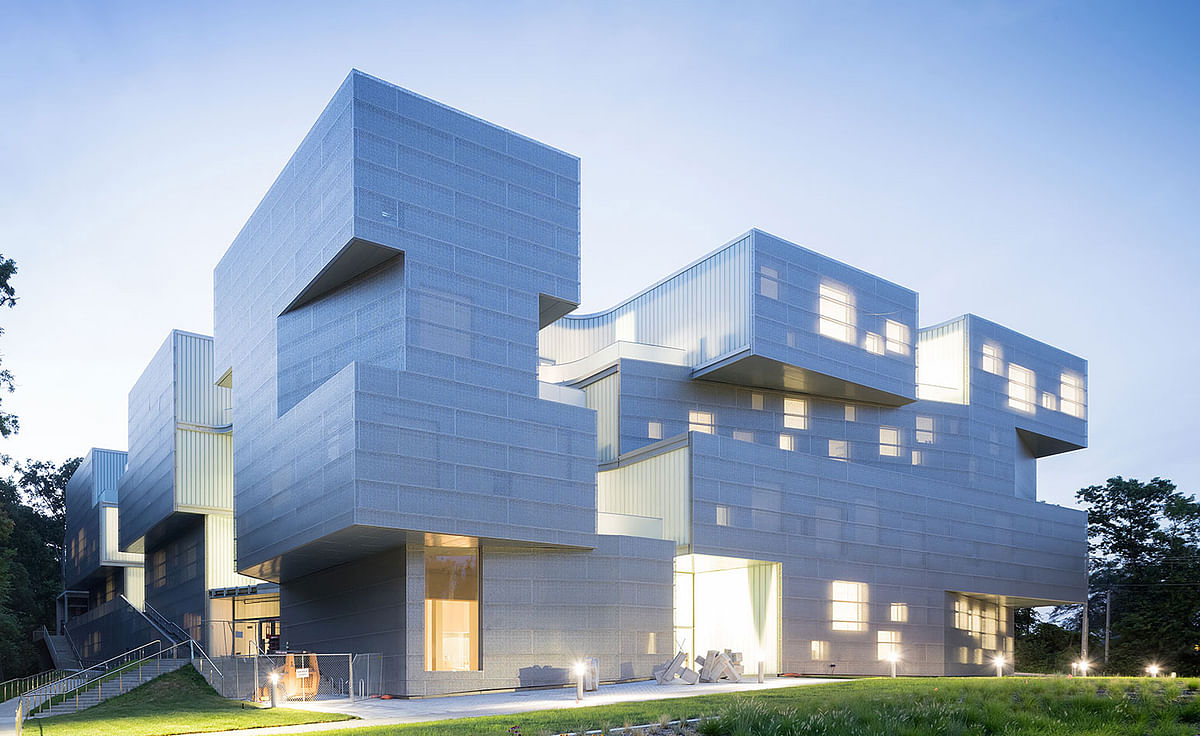
Related
The American Architecture Awards has been America’s highest public tribute for architecture since its inception in 1994. Co-organized by The Chicago Athenaeum and The European Centre for Architecture Art Design and Urban Studies, the prize is presented to recently built top-notch projects in architecture, landscape, and planning that were either built in the U.S. or abroad by the country's leading designers and planners, like Steven Holl, Renzo Piano, and Olson Kundig, to name a few. The competition also hints at the directions these designers are taking American architecture.
The 2017 competition concluded with over 130 winning projects around the world in multiple categories. Check out some of the projects below.

BURJ 2020, Dubai, United Arab Emirates | 2016. Architects: RNL Design
Project excerpt: “The aim of the Burj 2020 master plan is to create an integrated design accommodating the world’s tallest commercial tower, enhancing the Dubai brand in general and that of the Jumeirah Lakes Towers development in particular. The tower is to be completed in advance of Expo 2020 Dubai.”

RELATED NEWS Dubai chosen for World Expo 2020 with HOK-led master plan

GLOBAL CONTEMPORARY ART MUSEUM (GCAM), North Adams, Massachusetts | 2015. Architects: Gluckman Tang Architect
Project excerpt: “This 165,000-square-foot exhibition and art storage facility for contemporary art adapts the economical and flexible building system of industrial sheds and the scale, massing, and form of early industrial mill buildings, such as those seen at the nearby Mass MoCA. Its goal is to be the “least expensive museum in the world” with a budget of less than $200/sf, or one tenth of the cost of typical “world-class” contemporary museum construction today.”
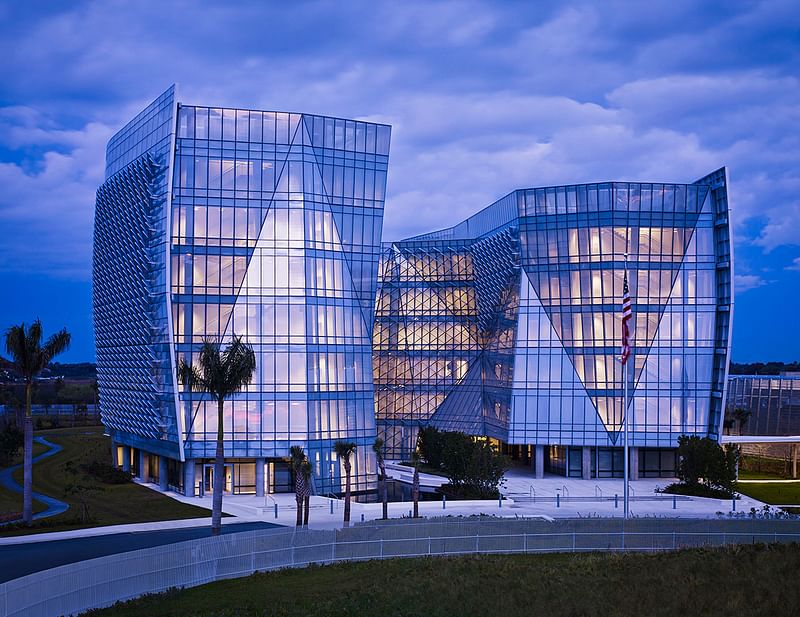
BENJAMIN P. GROGAN AND JERRY L. DOVE FEDERAL BUILDING, Miramar, Florida | 2014. Architects: Krueck + Sexton Architects. Architects of Record: Gensler.
Project excerpt: “This 375,000-square foot, highly sustainable Federal Office Building, is located at 2030 S.W. 145th Avenue in Miramar, FL. Developed under the GSA Design Excellence Program and occupied by the FBI, the campus buildings are oriented and shaped in response to the local climate, natural environment, and agency needs. As a result, the office building maximizes daylight and views while minimizing energy consumption, and provides a superior workplace for federal agents. Restored natural wetlands of the Florida Everglades make up the majority of the 20-acre site, connecting the campus to its native community while visually integrating high-performance perimeter security features.”
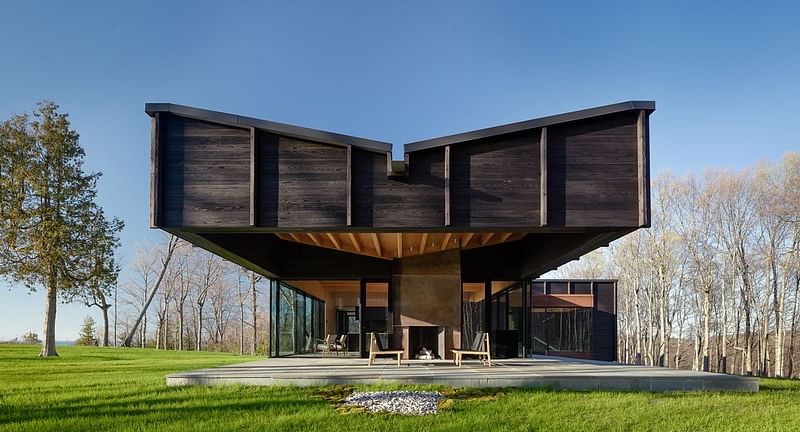
MICHIGAN LAKE HOUSE, Leelanau County, Michigan | 2016. Architects: Desai Chia Architecture.
Project excerpt: “Perched on a woodland bluff overlooking Lake Michigan, this home is an assemblage of three offset structures that play off each other— the ‘gathering’ structure contains the living room, kitchen and a covered 'vista' seating terrace; the two 'sleeping' structures house the master bedroom suite and three children's bedrooms. A dining area breezeway connects all three structures.”
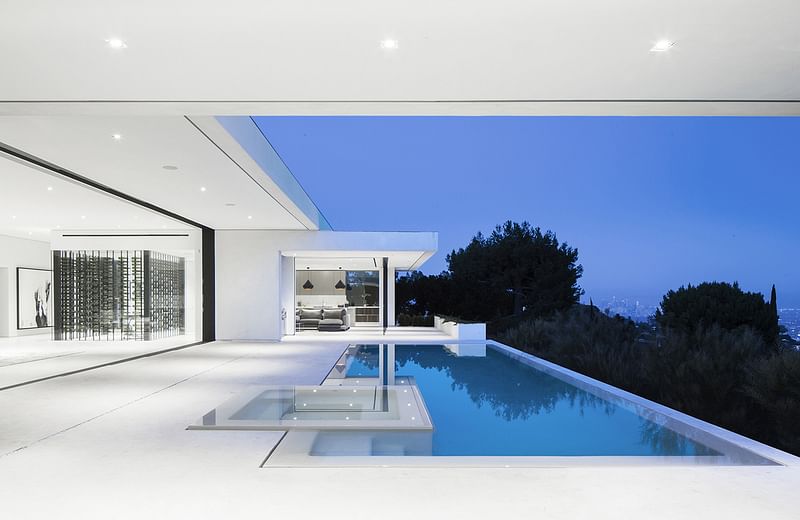
MIRRORHOUSE, Beverly Hills, California | 2016. Architects: XTEN Architecture
Project excerpt: “The Mirrorhouse is perched in the hills of LA, located in the Trousdale Estates of Beverly Hills with an incredible view extending from Downtown LA to the Pacific Ocean. The project is an exercise in restraint with a very straightforward goal: to create a simple, rational house that accentuates and amplifies the connection to the exterior – celebrating the unique lifestyle that Los Angeles provides.”
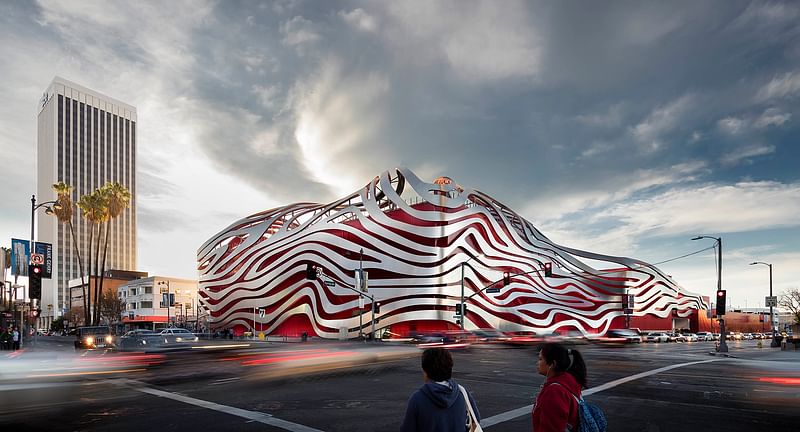
PETERSEN AUTOMOTIVE MUSEUM, Los Angeles, California | 2014. Architects: Kohn Pedersen Fox Associates.
Project excerpt: “Located on “Museum Row” of the famed “Miracle Mile”, the new Petersen Museum, which showcases the art, experience, culture and heritage of the automobile, is a complete exterior transformation and dynamic interior redesign, a major step towards the museum’s goal of rebranding for a more highbrow image...Unlike most museum renovations, which involve complete building teardown, this is a repositioning project. To use the metaphor of a car, if the existing building is a car’s chassis, the design is the body. The bones of the structure remain, and the existing concrete portico on Wilshire is removed. The rooftop becomes converted into a party space which can be rented out. A corrugated aluminum rain screen outboard wraps around the building on each of the three street frontages, giving the museum an entirely new look and feel.”
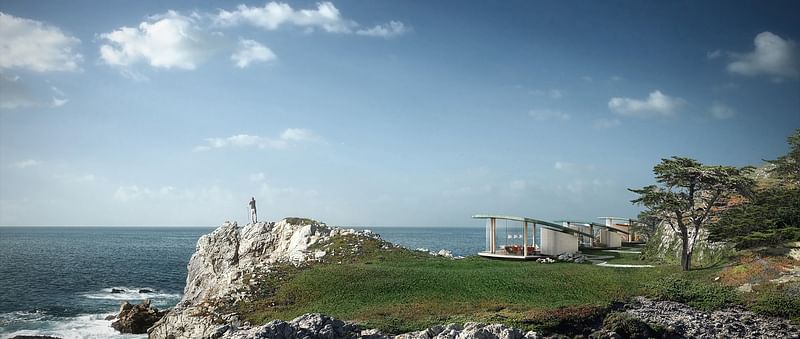
SEA SONG, Big Sur, California | 2016. Architects: Form4 Architecture
Project excerpt: “The vast plane of the Pacific Ocean and the ruggedness of the coastline set the stage for this gentle architectural insertion. Unobtrusive by design, it is both private from the main road and utterly transparent to what lies ahead. Many descriptors capture what holds together this composition: a trio of gliding Manta Rays, expressive cellular design, a parallel topography to the existing one, sail-like roofed pavilions, a village of transparent huts, the list goes on. The birth name of this design is Sea Song...These pure shapes are biomorphic, evocative of sea shells, crustaceans, and other creatures of the water world, responsive to the rock formations and the existing ecosystem. Its environmental footprint is virtually null. They are soft on their footprint, being raised on a cantilevered podium, of minimum disturbance on the site.”

SHINSEGAE INTERNATIONAL, Seoul, South Korea | 2015. Architects: Olson Kundig .
Project excerpt: “A new icon in the heart of Gangnam-gu, one of Seoul’s largest districts, the building unites more than five hundred Shinsegae employees, who were previously spread between several buildings throughout the city. The program includes staff offices and meeting spaces, design studios, a rooftop garden and sculpture park, and ground-level retail and restaurant space that face onto a public plaza.”

RELATED NEWS Winners of the 2015 AIA Seattle Awards
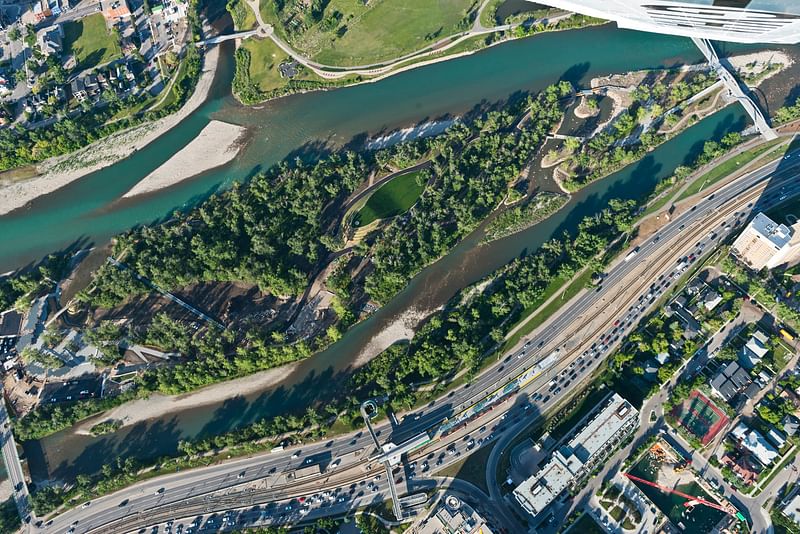
ST PATRICK'S ISLAND, Calgary, Alberta, Canada | 2015. Landscape Architects: W Architecture and Landscape
Project excerpt: “The redesign of St Patrick’s Island is the centerpiece of an ambitious redevelopment strategy for Calgary’s East Village. Charged with transforming a neglected urban island into an engaging park, we drew on the ecological history of the island for inspiration to increase its biodiversity and create a “living island.” The ‘Living Island’ provides a natural landscape infrastructure, creating both a well-located community resource and increased ecological diversity. This meant configuring new topographies to allow the water to again interact with the island in the form of two new but different channels—a stream and a wetland. These features expand the available habitat and generate a sense of place...”
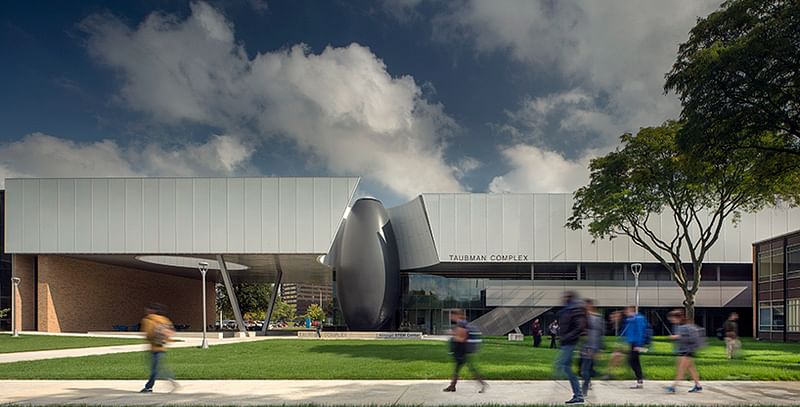
TAUBMAN COMPLEX, South eld, Michigan | 2016. Architects: Morphosis Architects with Albert Kahn Associates.
Project excerpt: “The A. Alfred Taubman Engineering, Architecture, and Life Sciences Complex is a new 36,700-SF academic laboratory building for Lawrence Technological University in Southfield, Michigan, that provides advanced facilities for robotics engineering, biomedical engineering, life sciences and related programs. The design of the building evolved around opportunities to enhance connectivity at multiple scales – between the school’s various engineering and design disciplines, previously housed in separate buildings, as well as within existing and future regions of the campus.”
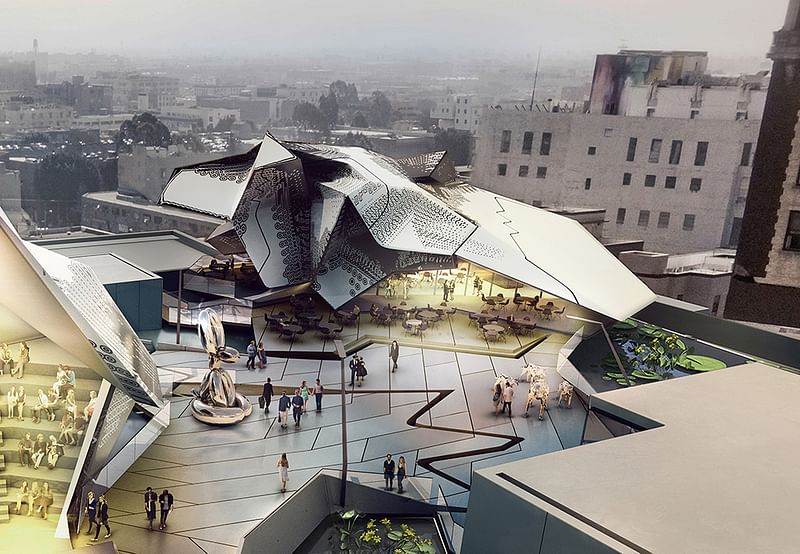
THE MAIN MUSEUM OF LOS ANGELES ART, Los Angeles, California | 2015. Architects: Tom Wiscombe Architecture.
Project excerpt: “The Main Museum of Los Angeles Art is a non-profit contemporary art museum conceived of by visionary developer Tom Gilmore and located in the heart of the Old Bank District of Downtown Los Angeles...The project is located beneath, within, and on top of the historical Farmers & Merchants Bank, the Hellman Building, and the Bankhouse Garage at 4th and Main Street. The museum is a three-dimensional space that weaves through these buildings, inhabiting their hidden recesses and forgotten spaces. It is an unorthodox museum form that withdraws from iconicity and creates an interior world, which occasionally reveals itself to the outside world. Rather than the traditional presentation and preservation of a collection in an exclusive environment, the museum embeds art deep into the space and life of the city.”
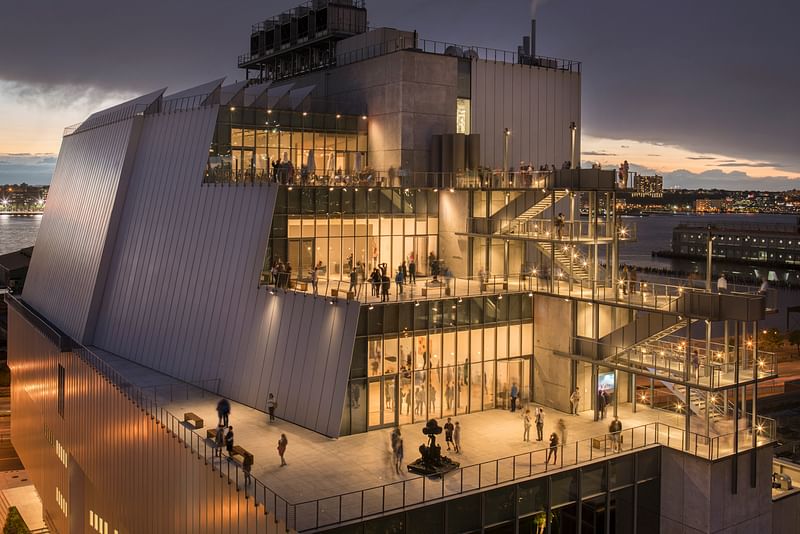
WHITNEY MUSEUM OF AMERICAN ART, New York, NY | 2015. Architects: Renzo Piano Building Workshop. Architects of Record: Cooper Robertson.
Project excerpt: “Designed by the Renzo Piano Building Workshop in collaboration with Cooper Robertson, the new Whitney Museum of American Art is at the forefront of a profound shift in museum design—from a temple to art to an open and transparent community resource. Innovation in architecture, engineering, construction, technology, and building materials supports this shift. The building’s distinct indoor/outdoor spaces create an unparalleled visitor experience intimately connected to the city around it.”

UNIVERSITY OF IOWA VISUAL ARTS BUILDING, Iowa City, Iowa | 2016. Architects: Steven Holl Architects. Associate Architects: BNIM Architects.
Project excerpt: “The new Visual Arts facility for the University of Iowa's School of Art and Art History provides 126,000-sf of loft-like space for all visual arts media, from ancient metalsmithing techniques to the most advanced virtual reality technologies, including Ceramics, 3D Design, Metal Arts & Jewelry, Sculpture, Printmaking, Painting & Drawing, Graphic Design, Intermedia, Video Art, and Photography. Also housed are galleries, faculty offices, an outdoor rooftop studio, and teaching spaces for Art History. The Visual Arts Building replaces an original arts building from 1936, which was heavily damaged during a flood of the University of Iowa campus in June 2008. The new building forms an Arts Quad with Art Building West, which was designed by Steven Holl Architects and has drawn students from all over campus to its social spaces and library since opening in 2006.”
Find more of the winning projects here.
All images courtesy of the 2017 American Architecture Awards.

Share
0 Comments
Comment as :